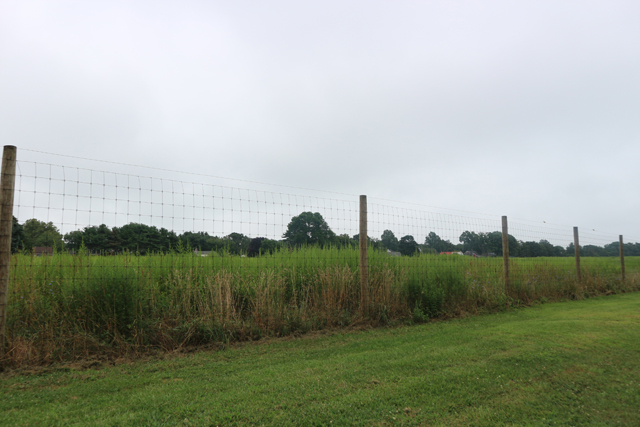Residents speak out against East Marion subdivision proposal


A plan to subdivide four acres of land in East Marion drew mostly pushback from neighbors during a public hearing last week.
The four-acre parcel is a piece of a larger 27.85-acre parcel. Suffolk County purchased the development rights to a portion of the overall parcel in 2001. The property, known as Colton Acres, is located in between Shipyard Lane and Gillette Drive in East Marion.
In 2003, the former owner, Joseph Cherepowich, sought to subdivide the four acres into four residential lots, but the application was never completed.
Property and planning records show the property is now owned by Stefan Soloviev, who in 2017 purchased upwards of 300 acres of farmland on the North Fork.
Mr. Soloviev is the owner of Crossroads Agriculture, a Kansas-based company that has purchased a number of properties on the East End in the recent years, including the former Davis Peach Farm in Wading River and several properties in Southold Town. In 2018, Mr. Soloviev was ranked 33rd on the The Land Report’s list of the 100 largest landowners in America, and his father, Sheldon Solow, was ranked 337th this year on Forbes Magazine’s list of the wealthiest people in America, with a net worth of $5.2 billion.
Stefan Soloviev and his father run Solow Building Co. in Manhattan.
According to Martin Finnegan, an attorney for Mr. Soloviev, current town code does not permit the property to be split into four lots. “[My client] agreed to forgo the fourth lot to create only three that are entirely conforming to the dimensional criteria and bulk schedule,” Mr. Finnegan said during the Planning Board hearing.
Along with the three residential lots, an existing fence along the property line would be removed to make way for a 25-foot wide asphalt driveway terminating in a cul-de-sac.
David Lanchner, a Shipyard Lane resident, said he was shocked to find out about the plans to subdivide and build homes, which he said would be visible from properties along his street.
“I have to say that none of us are happy with this,” Mr. Lanchner said, explaining how he informally polled some of his neighbors. “All of us would like to see this project stopped dead.”
He questioned why the land, which is currently undisturbed forest and home to wildlife including bats, will be developed.
“I question why Southold Town is choosing to develop agricultural land — land that’s zoned for agriculture that’s clearly lacking in this county. This is prime farmland,” he said.
The parcel subject to the subdivision is currently properly zoned R-40, according to a town zoning map.
Anne Murray of East Marion said additional development could worsen traffic concerns. She also inquired about the square-footage of the homes, which is unclear since no plans for the homes have been submitted yet.
“That neighborhood has historically been sort of one-family homes that have been around for quite some time, as opposed to a lot of the McMansions going up,” Ms. Murray said. “I sincerely hope that the builder will not be putting up outsized homes that will dwarf the neighbors … I think that would be very sad as we all know the town right now does not have a limit on house size so it’s very possible that this could occur.”
Christina and Jay Lefkowitz, whose Main Road property would border the proposed driveway access, were most concerned with the plans to pave the road.
“This is not a road, this is a private driveway,” she said, that has historically been used by farmers.
When the couple bought their home in 2002, Ms. Lefkowitz said she assumed the wooded property would be developed someday.
“I accepted that someone would be living behind me one day, but never imagined three homes and a cul-de-sac,” she said.
She acknowledged that the development of three homes “is not the worst thing, as long as it’s done right” and trusts the developer to consider local character.
Mr. Finnegan said they are taking care to ensure that future development minimizes disturbance to nearby residents. “[My client] has taken great strides to minimize the development of a heavily wooded parcel,” he said, noting that a “significant” buffer would be maintained around the properties. “The development will essentially be invisible to everybody.”
But removing the fence, Ms. Lefkowitz argued, negatively impacts her property.
“Where’s my buffer?” she repeatedly asked. “I take a hit. I’m on the Main Road,” she said, noting that if the road is developed as planned, she would need to put her own fence in or plant trees to protect her own privacy.








